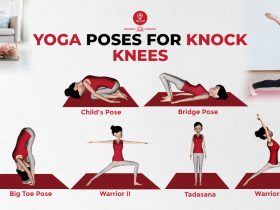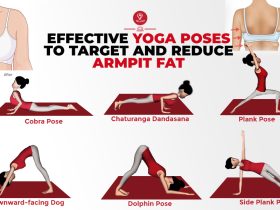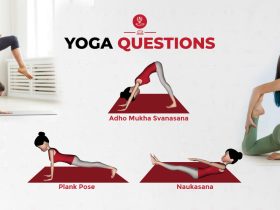
Vertigo is caused by some type of problem in the vestibular system, which controls the brain. Sometimes this disease also occurs due to imbalance in the brain. The important thing is that by starting yoga for vertigo and timely diagnosis, the ability to unbalance the brain can be normalized.
Vertigo means feeling dizzy or dizzy. These mainly include a feeling of spinning and tilting to the side, dizziness, headache, feeling of falling, feeling unsteady or unbalanced. Vertigo can be caused by many causes, such as BPPV (benign paroxysmal positional vertigo), Meniere’s disorder, vestibular neuritis, cervical spondylitis and sinusitis, acoustic neuroma, otolith dysfunction, vestibular migraine, central vestibulopathy, or psychogenic disorders.
The main reason for this problem is imbalance of the brain. This embolism affects the location that determines the direction of sound movement which is caused by a build up of virus, calcium or any other fluid. However, it has been proven that yoga asanas balance the body and affect the nerves and definitely cure the problem of dizziness.
Depending on its underlying cause, dizziness may last from a few seconds to a few minutes or even hours or days.
How Does Yoga Asana Curing Vertigo?
Some yoga asanas have a direct effect on the nervous system, stimulating the nervous system and helping in supplying oxygen to the body. These asanas strengthen the nervous system and balance centers in the inner ear, work on brain cells and help to concentrate. Additionally, blood circulation to the head and the rest of the body increases.
However, vestibular yoga exercises are done depending on the underlying disease causing vertigo and keeping in mind the patient’s age, weight, knee, back or neck problems or other associated diseases.
5 Most Effective Yoga Poses for Vertigo Patients
To treat vertigo, you should practice these yoga asanas very slowly and it would be wise to avoid any jerky movements. Keep in mind, do not practice yoga during the severity of the disease, start practicing after the symptoms subside.
Let’s see yoga for vertigo Adriene–
Paschimottanasana (Seated Forward Bend)
Benefits – Paschimottanasana is a truly stress-free pose for your peripheral nerves. It helps balance vascular pressure and relieves anxiety, anger and irritability. By practicing regularly it will ease the nerve pathways and thus is the best yoga asana for vertigo relief.
How To Do It –
- Sit with your legs straight, place your hands on your thighs.
- Keep the arms straight and take them above the head.
- Keep the legs straight, bend forward from the hips as much as possible and hold the toes.
- Knees will remain straight.
- After this, try to bring the head forward so that it touches the knees.
- Remain in this position while breathing normally.
- Keeping the hands straight, straighten the body.
- Again place your hands on the thighs.
To know more about this asana, click here: Paschimottanasana
Balasana (Child Pose)
Benefits – Balasana is a refreshing and calming asana that relieves the body of lost energy, which relaxes and refreshes the body. This yoga asana removes stress and keeps the nervous system of your body healthy. Apart from this, it strengthens the muscles of neck, shoulders and back. Adequate amount of blood reaching the brain reduces the problem of dizziness and helps in increasing the blood flow in the body.
This is very simple yoga asanas you can easily practice this yoga at home.
How To Do It –
- Sit on your knees or sit in Vajrasana posture.
- Bend your forehead towards the ground.
- Keep the head on the ground in front of the knees.
- keep torso between your thighs
- Extend your arms in front of you.
- Maintain this posture for 5-10 breaths.
To know more about this asana, click here: Balasana
Halasana (Plow Pose)
Benefits– This asana helps in increasing pure blood flow to the brain cells. Which has a positive effect on the nervous system. This asana will probably have the most benefit in eliminating BPPV. Moreover, this asana helps in stimulating your nerve functions and speeding up the metabolism.
How To Do It –
- Lie on your back. The arms will remain close to the body.
- The palms will be upwards. Lift the legs, buttocks and torso like Sarvangasana.
- Keep the legs straight and bring them down behind the head.
- The toes touch the floor and the chin touches the chest.
- Remain in this posture breathing normally for as long as possible.
- Then raise both the legs in Sarvangasana.
- Exhale and slowly return to the starting position.
To know more about this asana, click here: Halasana
Sarvangasana (Shoulder Stand Pose)
Benefits – This asana stimulates the nervous system. Helps the body resist alcohol and relaxes the mind. The asana moving from the lower part of the body increases the blood supply and thus this asana makes all the cells of the body more active. It activates the return of nerves and is especially good for headaches.
How To Do It –
- Lie on your back. Lift the legs (straight or bent), buttocks and torso off the floor.
- Support the back with your hands.
- Slowly straighten the legs and back, so that the entire weight of the body falls on the neck, shoulders and arms.
- The chin touches the chest.
- As far as possible the back and legs should come in a straight line.
- Remain in this posture for 1 to 2 minutes while breathing normally.
- Lower the feet, bring the knees towards the head and slowly come back to the starting position.
To know more about this asana, click here: Sarvangasana
Savasana (Corpse Pose)
Benefits – This yoga asana brings deep relaxation in meditation. It rebuilds tissue and cells, relieves all stress and tension. It is beneficial in blood pressure, anxiety and insomnia.
How To Do It –
- Lie on your back.
- The palms rest on the sides.
- Take a deep breath and make sure the body is in a straight line.
- Close your eyes.
- Pay attention to every part of the body.
- Take deep breaths.
- Get into a meditative state, but try not to fall asleep.
To know more about this asana, click here: Savasana
Things Keep in Mind When You Practice Yoga For Vertigo Problem
- If you often feel dizzy, then take care of yourself while bending forward during yoga. Do not bend forward or backward suddenly.
- While doing these yogasanas, do not hurry at all while getting up and sitting.
- If you do Sarvangasana, then try to do these yoga asanas close to a wall so that you can easily maintain balance.
- Do not do backward bending yoga as it can increase the problem of dizziness.
- Do not hold your breath while doing any yoga asana. If you feel dizzy while doing yoga, then start doing Balasana.
Conclusion
Vertigo can be reduced to a great extent with the use of ancient disciplines like yoga, meditation and relaxation. Along with these yoga postures, always practice some types of pranayama such as Kapalbhati, Bharmari, and AnulomVilom pranayama to reduce anxiety and stress.
For simple and accurate practice of Pranayama- Download today app 7pranayama from App store or Play store”
Yoga for Vertigo or dizziness is also called vestibular rehabilitation exercises and doctors recommend doing these exercises to get relief from vertigo. These exercises help in correcting the loss of balance of the body caused by internal problems of the ear by stimulating the central nervous system.
Do not forget the diagnosis and treatment of medical conditions.
RELATED ARTICLES
Oct 06, 2024
Balance Your Body: Yoga Poses For Knock Knees (Genu Valgum)
Knock knees, or “genu valgum,” is a condition in which the knees touch each other while the ankles remain apart.[...]
Sep 20, 2024
Effective Yoga Poses to Target and Reduce Armpit Fat
Fat accumulation under the arms is a common problem for many women, which is often considered an important part of[...]
Sep 13, 2024
Answering Your Top 10 Yoga Questions: A Beginner’s Guide
Welcome all yoga beginners! If you have landed here because you’ve heard how wonderful yoga is for you. Here are[...]
RECENT POSTS
Disclaimer
The content is purely informative and educational in nature and should not be construed as medical advice. Please use the content only in consultation with an appropriate certified medical or healthcare professional







